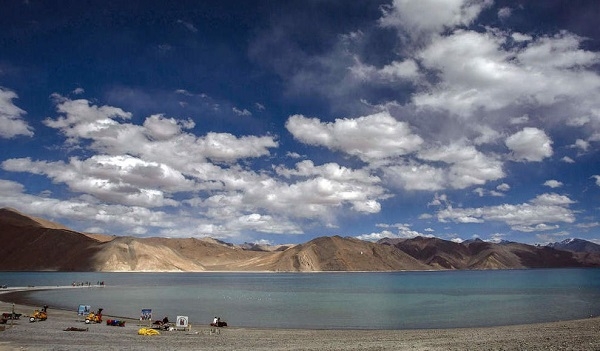Ladakh's Tso Kar Wetland Complex becomes India's 42nd Ramsar Site
Total Views |
Leh, Dec 25: The Tso Kar Wetland Complex located in Ladakh has been recently added as the 42nd Ramsar site. It is the second Ramsar site in the Union Territory of Ladakh.

The Tso Kar Basin is located in a high-altitude wetland complex. It consists of two main waterbodies Startsapuk Tso and Tso Kar. The Startsapuk Tso is a freshwater lake of 438 hectares to the south. The Tso Kar lake is a hypersaline lake of 1800 hectares.
The name Tso Kar refers to the white salt efflorescence on the margins of the lake caused by the evaporation of the saline waters. The local climate is arid, and glacial meltwater is the primary water source for the lakes.
Tso Kar Basin is an A1 Category Important Bird Area according to the Bird Life International. It is a key staging site in the Central Asian Flyway. Also, the site is the most important breeding areas of the Black necked Cranes in India. It is also called Tsho Kar lake. It is a fluctuating Salt Lake located in Rupushu plateau.
The Important Bird Area is an area identified internationally by a set of criteria for the conservation of bird population, developed by Bird Life International. There are 12,000 Important Bird Areas worldwide.
The site is habitat of numerous threatened species including the endangered saker falcon (Falco cherrug) and Asiatic wild dog or dhole (Cuon alpinus laniger), and the vulnerable snow leopard (Panthera uncia).
The Site also acts as an important stopover ground for migratory birds along the Central Asian Flyway and is one of the most important breeding areas in India for the black-necked crane (Grus nigricollis).
The Central Asian Flyway covers continental area of Eurasia between Arctic Ocean and Indian Ocean. It covers northern most breeding grounds in Siberia, non-breeding winter grounds in India, West Asia, Maldives and British Indian Ocean Territories.
Ramsar convention is an inter-governmental environmental treaty established by UNESCO and came into force in 1975. A Ramsar site is a wetland site designated to be of international importance under the Ramsar Convention.

